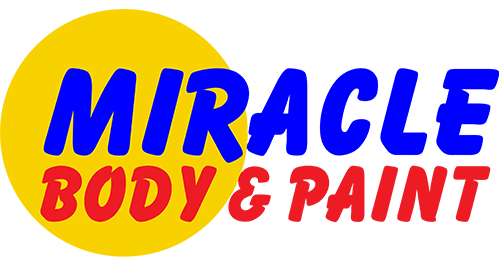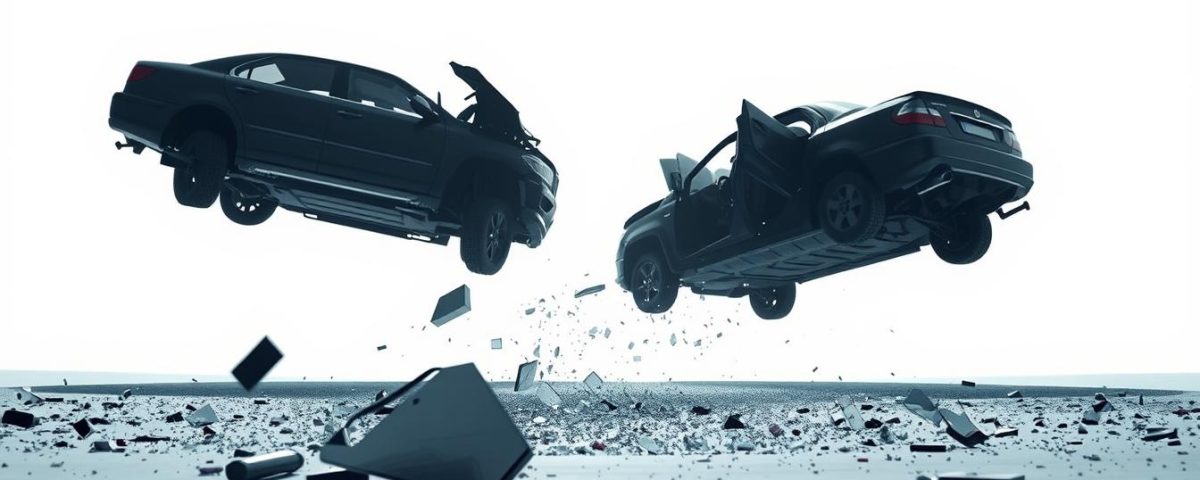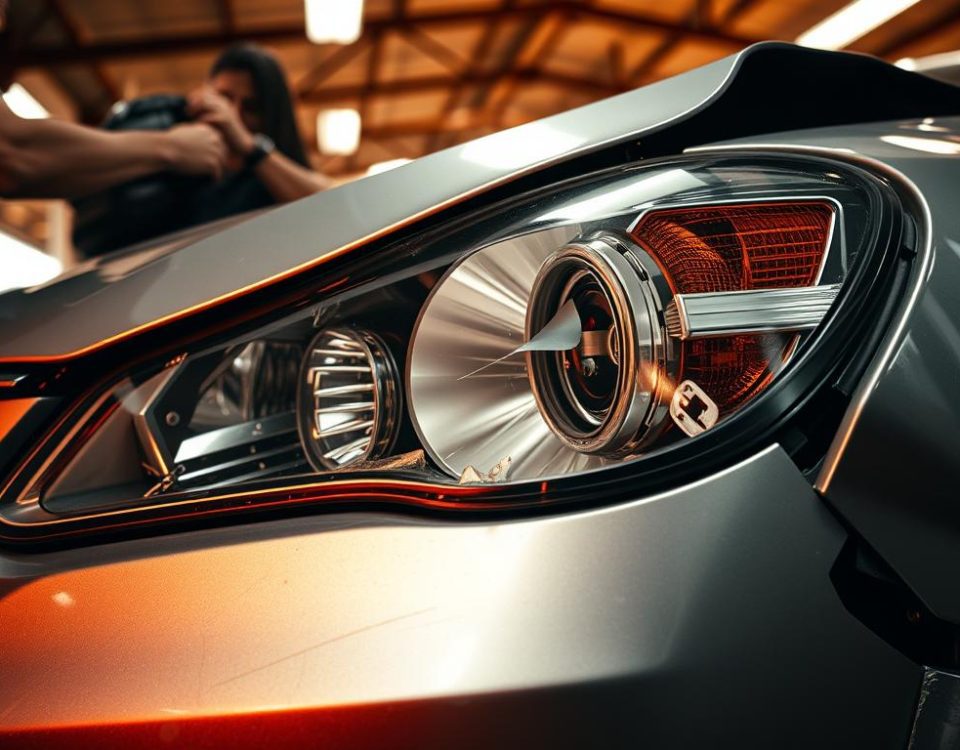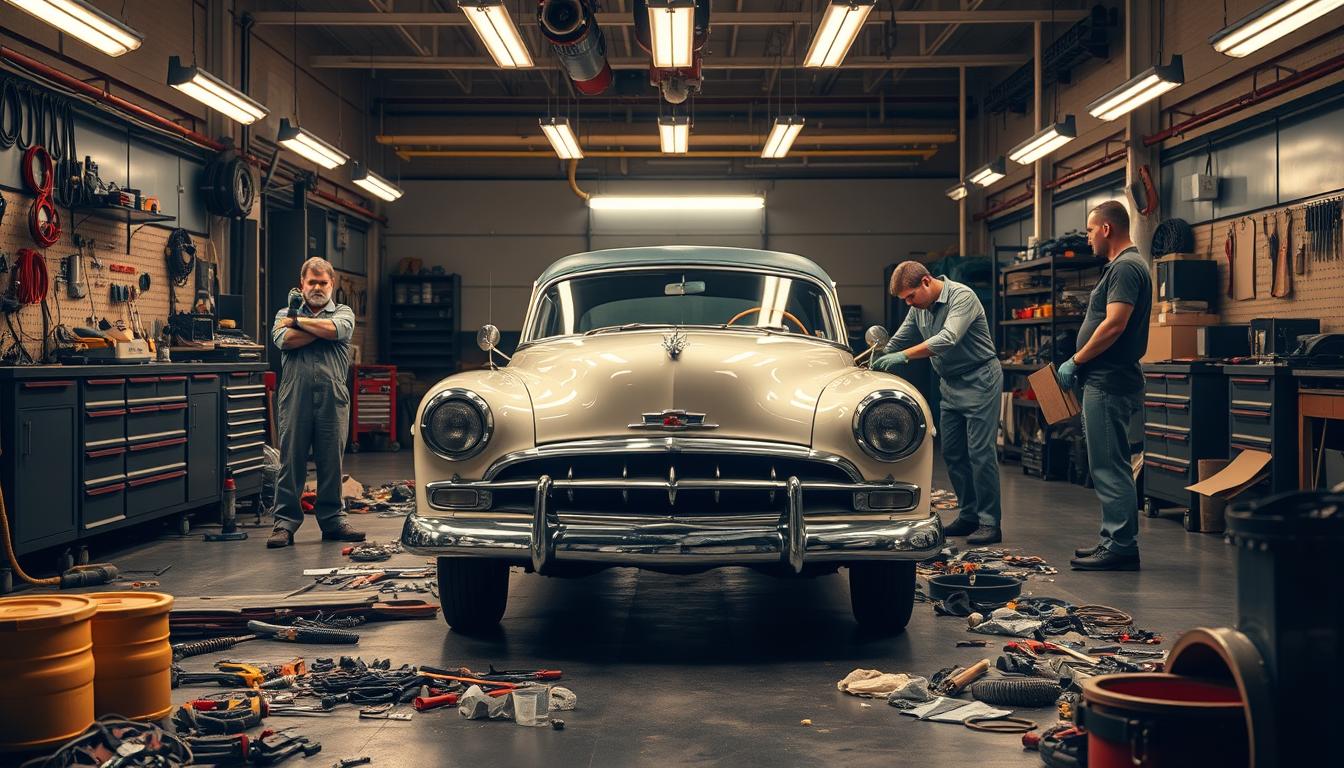
7 Tips to Keep Your Car Looking Great After Body Repairs
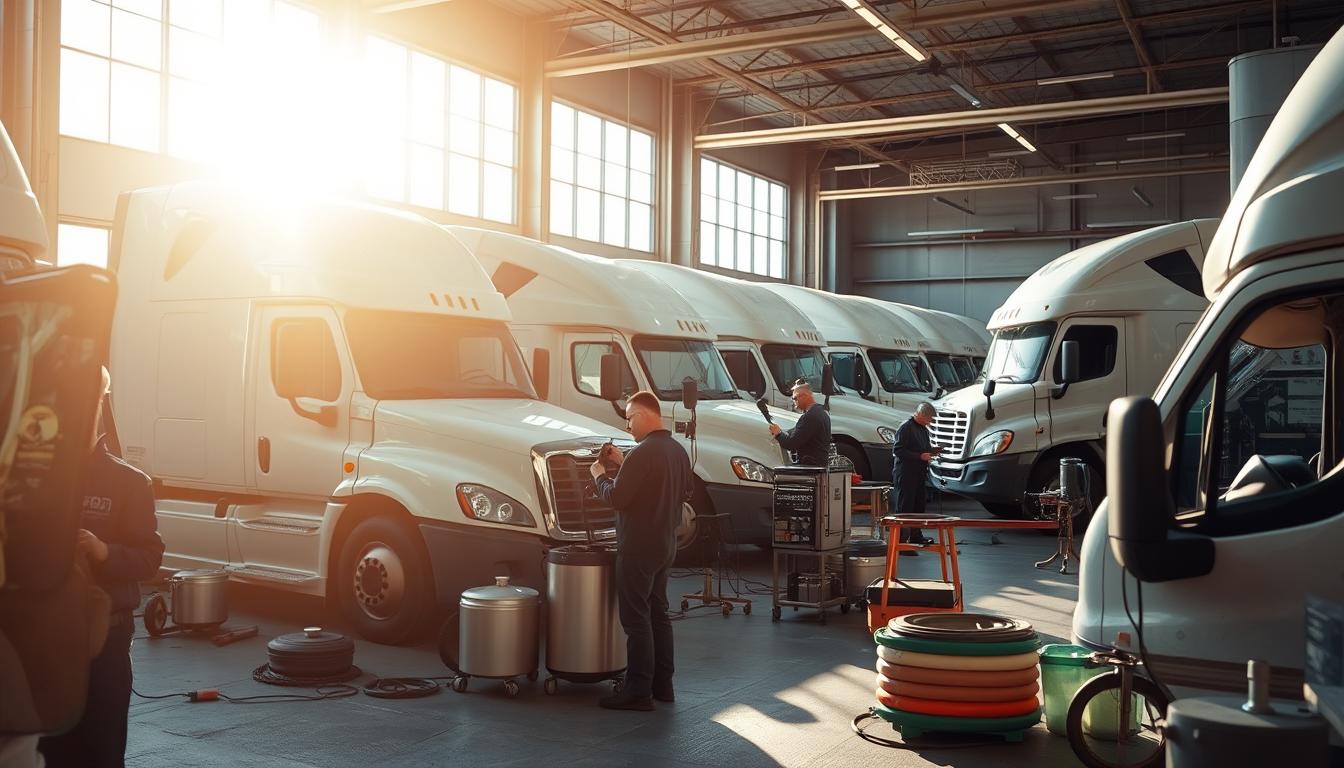
How Our Fleet Body Repair Program Keeps Your Business Moving
Car accidents are an unfortunate reality of daily life, with every driver likely to be involved in at least one accident during their lifetime. The aftermath of a collision can be chaotic, with misinformation often complicating the process of getting your vehicle back on the road.
At Miracle Body and Paint Collision Center, we’ve seen how believing common myths about car accident repairs can lead to costly mistakes and compromised vehicle safety. Many drivers mistakenly believe that minor accidents don’t require professional attention, which can result in serious long-term issues.
Understanding the truth behind these repair myths is crucial for making informed decisions after any collision. By debunking these misconceptions, we can help you navigate the complex process of collision repairs and ensure your vehicle is restored to its pre-accident condition.
Key Takeaways
- Minor accidents can still cause significant damage that requires professional repair.
- Misconceptions about collision repairs can lead to costly mistakes.
- Understanding the truth behind repair myths is essential for vehicle safety.
- Proper repair protocols can save you from decreased resale value.
- Miracle Body and Paint Collision Center is here to guide you through the repair process.
The Reality of Car Accident Damage
Understanding the full extent of damage after a car accident is crucial for maintaining your vehicle’s integrity and your health. Even minor fender benders can lead to chronic injuries that affect daily life, making it essential to look beyond the immediate visible damage.
Why Accurate Information Matters After a Collision
Accurate information about collision damage is vital because it ensures proper repairs that maintain your vehicle’s safety features and structural integrity. Many vehicle owners underestimate the complexity of modern car construction and the specialized knowledge required to assess collision damage properly.
How Misconceptions Can Affect Your Vehicle’s Repair
Misconceptions about vehicle damage can lead to incomplete repairs, compromising safety systems designed to protect you in future accidents. Key points to consider include:
- The impact of a collision extends beyond visible damage, affecting structural components not apparent during visual inspection.
- Modern vehicles have complex safety systems and crumple zones that can be compromised even in minor accidents.
- Professional assessment is essential to detect damage to electronic systems, frame components, and safety features.
Myth #1: Minor Accidents Don’t Require Professional Repairs
It’s a widespread belief that minor accidents don’t necessitate professional vehicle repairs. However, this myth can lead to significant issues down the line. Even if the damage appears minimal, there could be underlying problems that aren’t immediately visible.
Hidden Damage That’s Easy to Miss
Minor collisions can cause significant hidden damage to your vehicle’s frame, alignment, and safety systems. Even low-speed impacts can compromise structural components designed to absorb crash energy and protect occupants in future accidents. Professional assessment after minor accidents can identify alignment issues that, if left unaddressed, lead to premature tire wear, handling problems, and decreased fuel efficiency.
Long-term Consequences of Neglecting Minor Damage
Neglecting professional repairs after minor accidents can lead to diminished vehicle value, failed safety inspections, and potentially dangerous driving conditions. Some of the issues that can arise include:
- Small dents and scratches that can lead to rust and corrosion if the protective paint layers are compromised.
- Modern vehicles containing sophisticated sensors and safety systems that can be damaged or misaligned in minor collisions, affecting their functionality in future emergencies.
- The cost of addressing minor damage early is typically much lower than dealing with the compounded problems that develop when issues are left unrepaired.
By understanding the potential consequences of minor accidents, vehicle owners can make informed decisions about their vehicle’s repair needs.
Myth #2: Cosmetic Damage Is Just a Visual Problem
Cosmetic damage after a car accident is often dismissed as a minor issue, yet it can be a sign of more serious problems. When a vehicle is involved in a collision, the energy transfer can cause damage that isn’t immediately visible. Just as internal injuries might not be apparent right away, the structural integrity of the vehicle could be compromised.
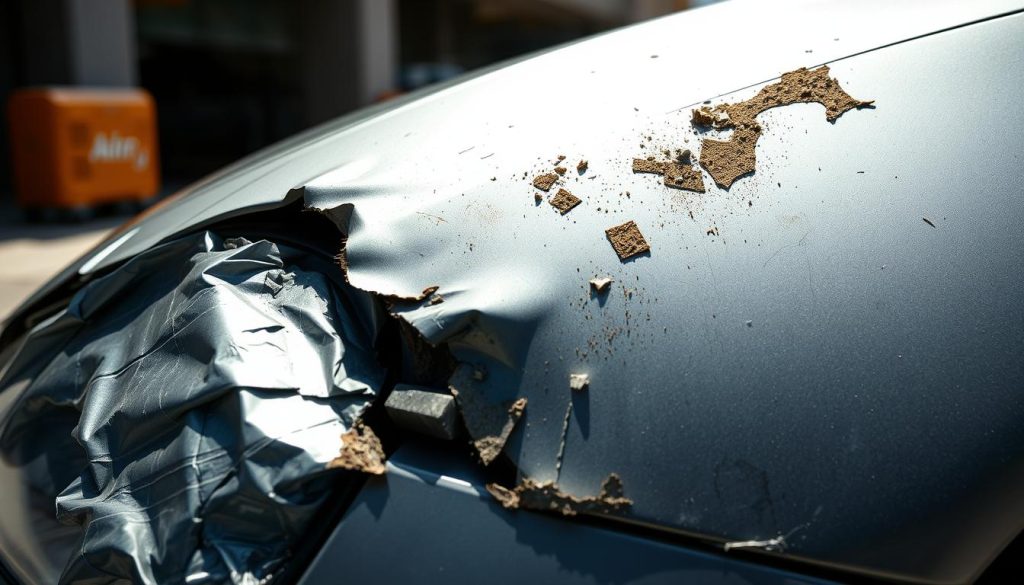
Understanding the implications of cosmetic damage is crucial for ensuring the vehicle’s safety and longevity.
How Surface Damage Can Indicate Deeper Issues
Surface damage, such as dents and creases, can be more than just cosmetic; they often indicate the energy absorbed during a collision. Modern vehicles are designed with safety systems that include crumple zones to absorb crash energy, which can lead to visible damage. This visible damage can signal potential issues with the vehicle’s structural elements.
The Connection Between Appearance and Structural Integrity
The appearance of a vehicle after an accident can be closely linked to its structural integrity. For instance, damage to exterior panels can affect the vehicle’s corrosion protection, potentially leading to long-term durability issues. Moreover, seemingly minor cosmetic damage can impact the vehicle’s aerodynamic properties, affecting its performance and safety.
Myth #3: Insurance Will Cover All Repair Costs
The notion that insurance will cover all repair costs after a car accident is a common misconception. Many drivers assume that their insurance policy will fully cover the expenses related to repairing their vehicle after an accident. However, this is not always the case.
Insurance policies are complex documents with various limitations, exclusions, and deductibles that can significantly impact the actual coverage for repair costs.
Understanding Insurance Coverage Limitations
It’s crucial to understand the specifics of your insurance policy, including what is covered and what is not. Insurance companies often have clauses that allow them to deny claims or reduce payouts based on pre-existing damage or the use of aftermarket parts instead of OEM components.
- Insurance policies contain specific limitations, exclusions, and deductibles.
- Policy language about “pre-existing damage” can be used to deny coverage.
- Understanding the difference between actual cash value (ACV) and replacement cost coverage is crucial.
Why Getting Multiple Repair Estimates Matters
Obtaining multiple repair estimates can provide leverage when negotiating with your insurance company. This can help ensure you receive fair compensation for necessary repairs. Insurance adjusters work for the insurance company, not for you, so having multiple estimates can be beneficial.
- Getting multiple repair estimates provides leverage when negotiating with your insurance company.
- Many policies have specific provisions regarding where repairs can be performed.
- Supplemental claims are often necessary as additional damage is discovered during the repair process.
Myth #4: DIY Repairs Are Just as Good as Professional Work
The notion that DIY repairs can match the quality of professional work is a myth that needs to be debunked. After a car accident, the safety and integrity of your vehicle are paramount.
The Risks of Amateur Collision Repair
Amateur collision repair attempts often fail to address underlying structural damage. Many injuries are asymptomatic after an accident, and adrenaline can mask the pain. DIY collision repair can lead to improper repair techniques that compromise the engineered crumple zones and safety systems designed to protect occupants in future collisions.
- DIY collision repair attempts often fail to address underlying structural damage.
- Improper repair techniques can compromise safety systems.
Professional Equipment and Expertise Make a Difference
Professional repair facilities use specialized equipment, including computerized measuring systems, to ensure frame and structural components are restored to manufacturer specifications. Professional insurance claims handling also benefits from the documentation provided by professional repair shops.
- Professional repair facilities use computerized measuring systems.
- Professional paint matching and application require specialized equipment.
Myth #5: All Body Shops Deliver the Same Quality Results
Many car owners assume that all body shops provide the same quality of repairs, but this is far from the truth. The reality is that significant quality differences exist between collision repair facilities.
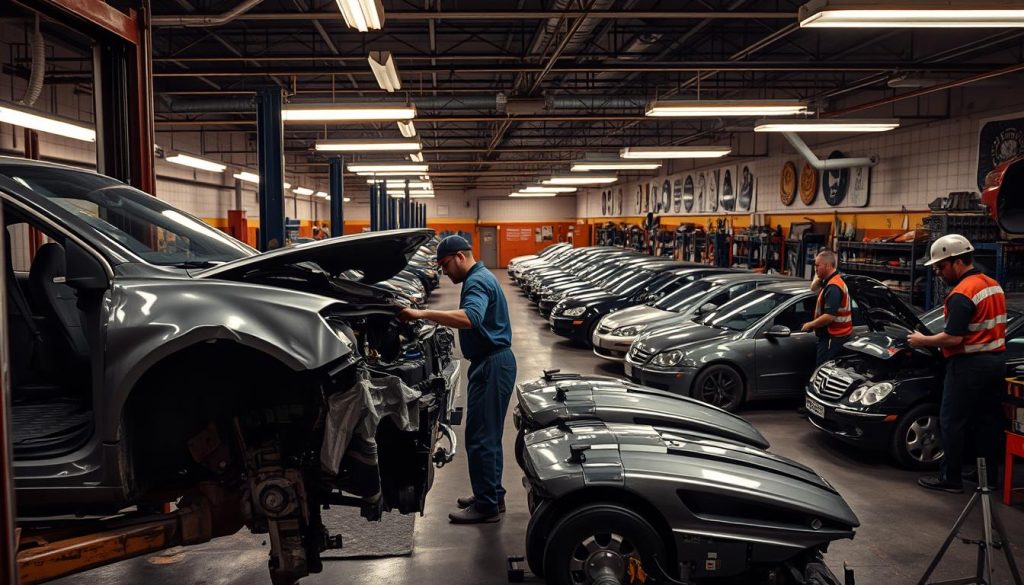
The Importance of Certified Technicians
Certified technicians play a crucial role in ensuring that repairs are done correctly. Manufacturer certification programs guarantee that repair facilities have the necessary training, equipment, and procedures to repair specific vehicle makes and models.
How to Identify a Quality Collision Repair Center
To identify a quality collision repair center, look for industry certifications such as I-CAR Gold Class status and manufacturer-specific certifications. Additionally, a reputable collision center should provide detailed documentation of all repairs performed and stand behind their work with meaningful warranties.
- Check for industry certifications
- Look for manufacturer-specific certifications
- Verify detailed documentation of repairs
- Check for meaningful warranties
Common Car Accident Myths That Can Cost You
After a car accident, the initial assessment often doesn’t reveal the full extent of the damage. Many individuals involved in collisions hold misconceptions about the necessity and process of repairs.
Physical and Financial Consequences of Believing Repair Myths
Believing common myths about collision repair can have significant financial consequences, including diminished vehicle value and compromised insurance coverage. The financial impact of these myths can far exceed the cost of proper professional repairs.
Why Immediate Professional Assessment Is Critical
Delayed professional assessment often results in more extensive and expensive repairs as initial damage worsens over time. Immediate assessment can help mitigate these issues, ensuring that all damage is identified and addressed promptly.
Why Trust Miracle Body and Paint Collision Center with Your Repairs
Miracle Body and Paint Collision Center stands out as a premier choice for car accident repairs due to its exceptional service and expertise. After a collision, it’s crucial to choose a repair center that can restore your vehicle to its original condition, ensuring both safety and longevity.
Our Expert Approach to Collision Repair
Our team at Miracle Body and Paint Collision Center employs I-CAR Gold Class certified technicians who receive ongoing training in the latest repair techniques and vehicle technologies. We prioritize OEM (Original Equipment Manufacturer) parts whenever possible to ensure proper fit, function, and safety. Our comprehensive quality control process includes multiple inspection points throughout the repair.
State-of-the-Art Equipment and Techniques
Our state-of-the-art facility features computerized measuring systems that ensure precise structural repairs to manufacturer specifications. We maintain manufacturer certifications, providing us with the specific training, tools, and procedures required to properly repair today’s sophisticated vehicles. advanced driver assistance systems (ADAS) to ensure these critical safety features function properly after repairs.
Conclusion: Making Informed Decisions About Car Accident Repairs
After understanding the reality behind common car accident myths, you’re better equipped to make informed decisions that protect both your safety and your investment. Proper collision repair is about more than just restoring appearance—it’s about ensuring your vehicle will protect you and your passengers in future accidents.
At Miracle Body and Paint Collision Center, our certified professionals provide honest assessments, quality repairs, and transparent communication. Don’t let insurance limitations dictate the quality of your vehicle’s repairs. Contact us today at (210)680-1987 or (210)858-3630 to schedule an assessment and let us restore your vehicle to pre-accident condition.

